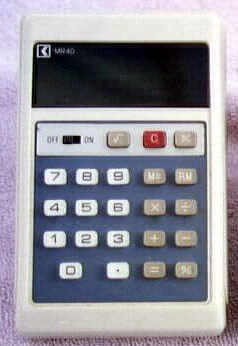About that infamous overclocked calculator.
I owned my first calculator when I was a high school student in 1975. It was a $20 "Technipet". Like all calculators, it took a measurable amount of time to calculate the more complex functions such as square root. Like many high school students I was obsessed with speed. I had to have the fastest calculator around. So I cheated.

After a little poking around with my home-made oscilloscope, I discovered the clock signal, which was generated by the calculator chip itself using an external capacitor to set the frequency. After some experimentation,
I found I was able to double the speed of the calculator. I also found that making it too fast made the calculator give incorrect answers! It did not "lock up" as a computer would have when overclocked too much. I also
tinkered with slowing it down, which gave some interesting effects. Of course, back then I did not know the word "overclocking".
Sadly, that calculator did not survive my adolescence, however my next one did. It is a Sanyo CZ-8113 from 1977. Like the old Technipet, I also overclocked it, and I have dug it out and dusted it off for it to be
included here. Unlike most computers or calculators, this one generated the clock signal entirely within the calculator chip. An external resistor (as shown in the picture below), determined the frequency. As standard,
this resistor was 56 K ohms. Changing it to 5.6 K ohms gave an approximate doubling of speed. Reducing the value of this resistor further made the "function" key inoperative. Of course, another side effect was to
increase battery consumption......but we overclockers never worry about such things!

Is this the fastest calculator in the world?